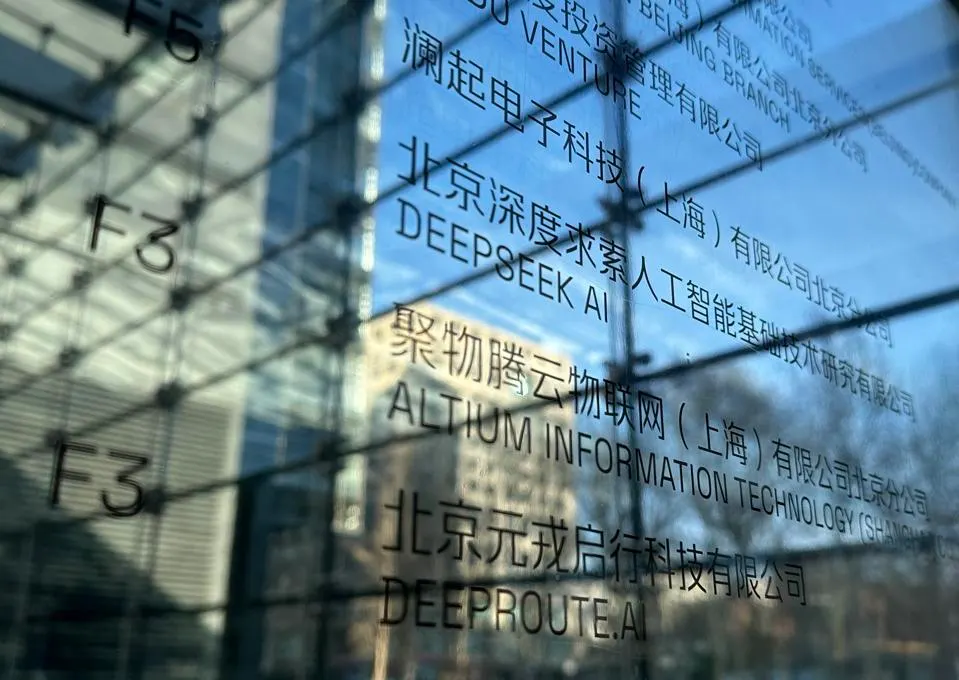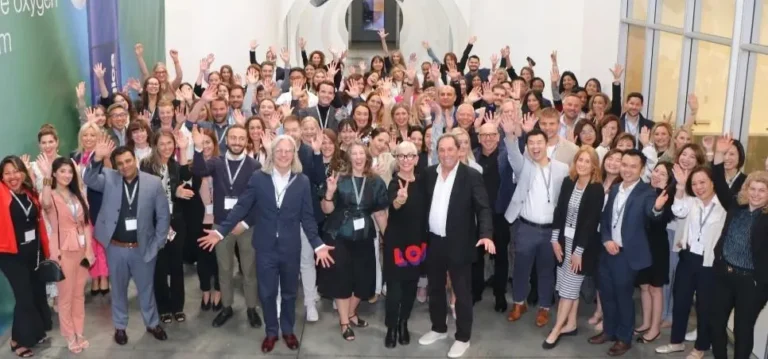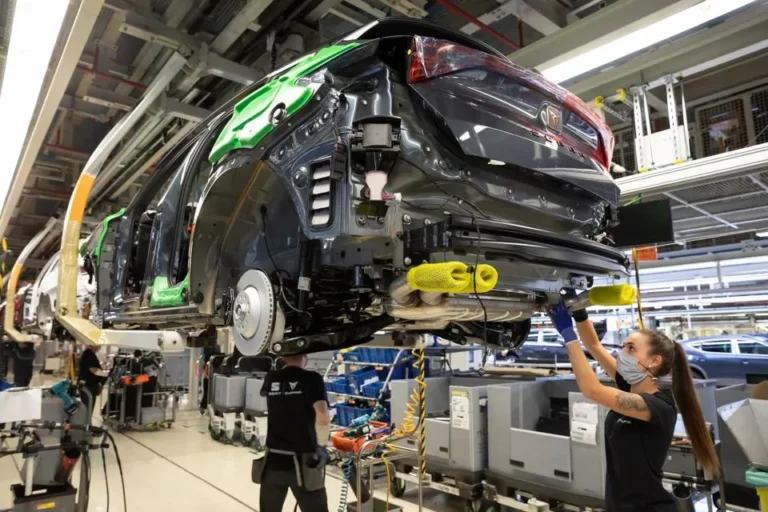Dean DeBiase is a best-selling author and Forbes Contributor reporting on how global leaders and CEOs are rebooting everything from growth, innovation, and technology to talent, culture, competitiveness, and governance across industries and societies.

AI Wars: How Enterprise And Government Leaders Can Win The AGI Arms Race

By Dean DeBiase
Fellow podcaster Ezra Klein set the industry abuzz last week with his episode The Government Knows AGI is coming. He spoke with a former White House special AI adviser, who claimed that the government is actively preparing for artificial general intelligence (AGI), anticipating its arrival within just a few years. I think sooner.
The episode struck a nerve, as quiet government rumblings about big shifts tend to do. This is no Manhattan project; unlike the race to nuclear power, and launching of the Internet, governments don’t seem to be taking as visible and active of a role in shaping the progression—and funding—of technology that is sure to have such a profound impact. Or are they?
We are all on the edges of our seats, wondering where this AI ride will take us and if it will mean utopia or dystopia. The truth depends on many variables, not the least of which is how we define AGI. Basically, AGI is about machines that can do things humans can, like thinking and problem-solving, where Agentic can make decisions and take action, but within limits. Agentic AI should be an important step toward achieving AGI—but there are issues. Predictions vary widelyaround how it will reboot organizations, impact governments, and reshape the fabric of societies.
Whether you agree with the aggressive timeline or not, one thing is clear: AI innovation is a juggernaut with daily disorienting developments. This poses massive challenges, whether you are an enterprise looking to adopt the latest AI, a startup striving to outpace the competition, or a government regulator/legislator/policymaker who’s worried about your country’s competitiveness, jobs and keeping us all safe from the singularity apocalypse.
Akin to an arms race with much at stake, the AI fury has CEOs’ heads spinning, as no one wants to be the one who missed the revolution. The spoils won’t necessarily go to the fastest, but to those who can navigate change strategically, without breaking anything in the process.
GenAI’s Breakout (2023-2024): ChatGPT’s adoption (100 million instant users and now 400 million) marked the beginning of the GenAI boom, reshaping industries and consumer behavior. GenAI, LLMs, and SLM’squickly became a competitive differentiator, enhancing content, engagement, and development.
Natural Language Processing 2023: GPT-4’s release set new benchmarks for human-like text generation, pushing the boundaries of NLP and improving AI’s ability to understand and generate nuanced responses.
Rise of Agentic 2025: Agentic AI emerged as a transformative trend for enabling autonomous AI agents capable of reasoning, planning, and executing complex multi-step tasks without human intervention. Unlike GenAI, Agentic focuses on independent decision-making and collaboration among agents.
Multimodal AI Systems: Companies like China’s DeepSeek are expanding into multimodal AI that integrates text, images, video, and audio generation. This could revolutionize industries such as gaming, digital marketing, and content creation.
Open Source and Accessibility: DeepSeek’s open-source models have lowered barriers for researchers and startups, optimizing AI performance on affordable hardware rather than relying on Nvidia’s GPUs. This shift should be accelerating democratized AI innovation, making powerful solutions more accessible.
The Revolution Is Being Televised
The Annual Threat Assessment of the U.S. Intelligence Community reports that the most direct and serious threats to America—now being accelerated by AI—continue to be state actors China, Russia, Iran, and North Korea. As much as Silicon Valley drove the next generation of technologies without a heavy hand of government in the last two decades, the stakes are too high for U.S. competitiveness not to have a more coordinated national AI rallying cry.
Need backup? Check out how my colleague, Bob Gourley, chronicles China’s geographic development strategy to advance their technology and AI dominance, in his latest OODA (observe, orient, decide act) piece:
• Beijing: National AI policy and academic research powerhouse.
• Shanghai: Commercial AI innovation and semiconductor leader.
• Shenzhen: Hardware manufacturing and robotics innovation center.
• Hangzhou: Private-sector AI and smart city pioneer.
• Hefei: China’s voice technology and niche AI research hub.
• Guiyang: China’s data city; big data and cloud-AI epicenter.
• Guangzhou: AI pilot city focused on manufacturing and computer vision.
• Wuhan: AI research hub specializing in optics and healthcare applications.
• Suzhou: Robotics and specialized AI hardware manufacturing hub.
• Harbin: Academic center for robotics and autonomous systems research.
Reminiscent of U.S. companies’ 2022 rush to embed Chat GPT into product road maps, China is following suit—on steroids. In what could be viewed as a national pride movement, fueled by the market’s overreaction to DeepSeek, Chinese companies—from games to automobiles—are tripping over themselves to imbed DeepSeek into their offerings. It’s not just about business, but an emotional level of competitive nationalism not seen from other countries lately. It’s a wakeup call for our leaders to get back on their horses…and giddy-up.
Okay, the U.S. is not China,but a free-market system that leads the world in technology development and deployment. The Trump Administration has been shifting America’s policy, and is in the process of preparing to accelerate our technology competitiveness, with a sharper focus on AI opportunities—not just safety and regulations. Most tech leaders are positive about this shift, with many lining up to contribute and participate, in sectors from chips and applications to infrastructure and data centers.
Lightning In A Bottle: Startups Vs. Big Tech
American competitiveness and national security are on the firing line. During his recent speech in Paris, U.S. Vice President JD Vance presented an AI rallying cry, stating, “The United States of America is the leader in AI and our administration plans to keep it that way.” He added “We must focus now on the opportunity to catch lightning in a bottle, unleash our most brilliant innovators and use AI to improve the wellbeing of our nations and their peoples. With great confidence, I can say it is an opportunity that the Trump administration will not squander, and we hope everyone convened here today feels exactly the same.”

Speaking of everyone,AI innovation needs to come from a wider range of providers, including the world’s top companies, labs and startups—but that is not always the trendline. Though there are thousands of AI-related companies, the democratization movements have often evolved toward oligopoly consolidation—and the success of America’s next wave of competitiveness will require companies of all sizes.
A Call To Arms Fire Alarm
Over the weekend, OpenAI’s Sam Altman pulled a fire alarm, sending a call to arms proposal to The White House, writing: “We are at the doorstep of the next leap in prosperity [and] the Intelligence Age AI creates prosperity and freedom worth fighting for.” And more directly adding, “DeepSeek shows that our lead is not wide and is narrowing. The AI Action Plan should ensure that American-led AI prevails over CCP-led AI.”
They are specifically calling for a democratic “freedom-focused“ fight with new regulatory and copyright strategies, along with aggressive infrastructure deployment and government adoption. Good input, as long as it is an inclusive war that engages and enables the entrepreneurial spirit that brought us here and fuels the next generation emerging growth companies and startups.
Though billions have flowed into thousands of companies recently, if you look at the latest funding rounds, four big-dog companies received well over 50% of the category funding. Databricks announced an additional $10B in a J round, OpenAI $6B+, xAI $6B and Anthropic around $4B. Like the Web3 movement, which seems to have stalled at the tech oligopoly gates, we cannot afford that with AI. The privacy, security, and prosperity of your company, your family, and your country (wherever you live) may depend on it.

OpenAI went beyond nationalism to also encourage an “AI Compact” with US allied nations that can support an AI infrastructure ecosystem. President Trump has already wrangle in $1T in global private sector commitments to the U.S., including investments in critical components like data centers and power infrastructure.I expect that number to double this year. These capital-intensive data center projects should move beyond the few massive hyperscalers to also include an arsenal of hundreds of faster moving entrepreneurial organizations like Musahost, TECfusions, and others.
Enterprises Stuck In GenAI Experimentation Gear
With all that, what is a CEO to do? It’s one thing to watch the headlines fly by, but what does this rapid AI advancement mean for leaders? Even before worrying about AGI’s impact and implications, enterprises have been facing waves of new AI innovations, with vendors bringing both opportunities and challenges.
Many organizations are running into issues across the spectrum: from integration complexity and organizational readiness to data quality and governance, to scalability, trustworthiness and security concerns. McKinsey found that, while 92% of companies plan to increase AI investments this year, only 1% are reaching AI maturity. Seems harsh. Gartner predicts 30% of AI projects will be abandoned by the end of the year, and by 2028, 33% of enterprise software applications will include agentic. This will enable 15% of day-to-day work decisions to be made autonomously. And BCG reports that 74% of companies struggle to scale value from AI.
The struggle is real. AI is advancing fast, but enterprise adoption isn’t keeping pace. The companies that can align AI with business goals, while ensuring governance and scaling strategically, will be the ones that stay ahead. When speaking with CEOs, I reiterate that the challenge is theirs to accept and its important to pick the right partners and vendors—because, again it’s giddy up time. Your organization’s results will vary based on leadership, risk tolerance, FOMO, and not wanting to be left behind.
Enterprise platform providers have rapidly evolved from conversational assistants to autonomous systems that can transform industries with reasoning, multimodal capabilities, and efficiency-driven innovations. Tech Mahindra’s Lakshmanan Chidambaram (a.k.a. CTL), has been helping companies across sectors, from manufacturing and finance to retail and healthcare, to strategically invest in and deploy AI, stating: “In the Americas, and indeed the globe, we are witnessing an unprecedented surge in AI investment and adoption. It’s no longer a choice but a force to reckon with. To meet these evolving demands, Tech Mahindra has strengthened its AI capabilities, and deepened industry partnerships and investments.”
Staying Ahead Of Rapid Change And Attacks
If corporate America is still stuck at the AI starting gate, how will it be ready for AGI disruption? While U.S. tech steps on the R&D gas and guides companies along the adoption path, will others eat our lunch? This very publication has covered strides by Chinese vendors like DeepSeek, which recently announced a much more cost-effective and energy-efficient approach to LLM training, as also noted above. Meanwhile, the latest Chinese wrench in the mix, Manus, is making bold game-changing claims about being the first fully autonomous AI agent.
Big tech is divided about AI impact. In a recent report, Anthropic CEO Dario Amodei stated: “In 12 months, we may be in a world where AI is writing essentially all of the code.” IBM’s CEO Arvind Krishna disagreed with this prediction, saying: “I think the number is going to be more like 20-30% of the code could get written by AI—not 90%.”
I think it will be higher than 50% soon, and checked in with a couple emerging companies helping lead the charge. NVIDIA-backed Kore.ai Founder and CEO Raj Koneru is an authority on how enterprises can adopt the latest AI while being ready for what is coming next. After some pivots, he’s kept his company on the leading edge, well before ChatGPT launched, with new AI advancements like LLMs, retrieval-augmented generation (RAG), multimodal AI, and now Agentic AI.
Their new Kore Agent Platform, announced today, is an outgrowth of the company’s work helping customers leverage AI. It helps enterprises build, deploy and orchestrate scalable and sustainable AI solutions across the enterprise.
The platform addresses AI adoption challenges, like the effectiveness of AI agents, which depends on the quality of data and context they receive—while many platforms seem to lack the depth needed for real-world applications. They address this with the platform’s Search and Data AI, offering pre-built connectors for structured and unstructured data, graph-RAG-powered search, and real-time context enhancement.
Additionally, enterprises struggle to understand how agents reason and make decisions. Unlike black-box models, Kore provides full observability, allowing administrators to trace, control, and retrain AI agents with complete transparency. Its agnostic design empowers companies to use any AI model, database, cloud, infrastructure or enterprise system without locking them in, giving full control and flexibility to choose best-of-breed.
Koneru added: “We’ve built an AI operating system that takes enterprises from experimentation to real-world, scalable deployment. With its advanced agentic AI, multi-agent orchestration, deep data intelligence, and enterprise-grade AI infrastructure, this platform is shaping what’s next in enterprise AI transformation. As organizations adopt multi-agent systems, our platform offers flexible autonomy levels tailored to business needs, risk profiles, and regulations.” This approach seems to enable CxOs to harness the transformative power of agentic AI while retaining control and oversight as they evolve toward more advanced AI systems. Look for more comprehensive platforms like this that can help people manage their businesses.
Observing The (Hallucinating) Observers
Observability solutions keep a watchful eye on systems and software to ride herd on performance and security issues. AI adds a whole new wrinkle, as it introduces vulnerabilities in security and content, e.g. hallucinations, prompt injections, and toxicity.
Coralogix CEO, Ariel Assaraf, who recently acquired Aporia explains: “The world is moving towards an AI-driven future at breakneck speed, but most companies are completely unprepared for the observability challenge that comes with it. AI models aren’t just software, they evolve, adapt, and generate massive, unpredictable data streams. Traditional observability tools were built for static code, not self-learning AI agents.”
According to Assaraf: “The smartest leaders aren’t just reacting to AI, they’re adapting their entire approach to monitoring, security, and governance. They’re demanding real-time observability, ensuring AI decisions are correct, unbiased, and secure the moment they happen, not hours or days later. They’re also integrating AI observability across security, compliance, and business teams—because AI impacts everything.”
The technology provides real-time AI observability and insights into AI agents, models, and pipelines, enabling enterprises to track correctness, toxicity, hallucinations, failures, and security risks as they happen. Assaraf added: “Companies that don’t embrace AI observability will drown in their own data, reacting too late and bleeding money.”
Minimizing The Bleeding In The AI Wars
The AI wars are here and it’s time to circle the wagons—defensively and offensively.
It’s hard to know where this AI journey will take us or what new buzzwords we will be chasing in the back half of this decade. But it is time to be ready for what will be a wild-horses growth era, with many unthought-of innovations and risks ahead. Forward-thinking business and government leaders need to plan, collaborate, invest, and aggressively leverage the best of what is available to create the next generation of capabilities, growth, and prosperity.






